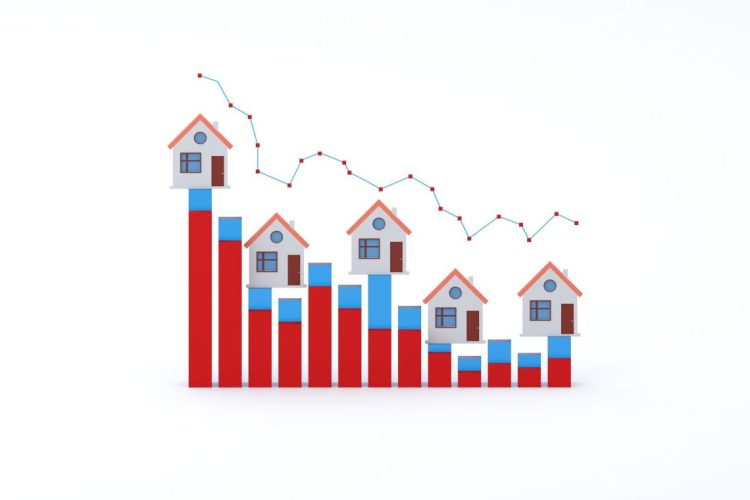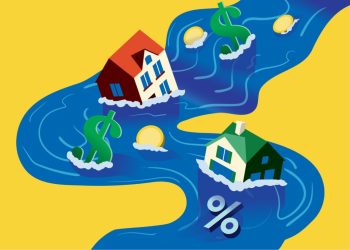The housing market has faced several challenges in recent years, from elevated mortgage rates to the lack of affordable housing. Developers face their own troubles as they adjust strategies based on buyer demands and consumer sentiment.
To encourage buyers and keep homes within reach, developers are turning their focus towards incentives and figuring out how their consumer base has changed, revealing the degree to which demand for homes and buyer behavior has shifted this year—and how builders are bracing for a potentially difficult period ahead.
Ryan Marshall, the president, chief executive officer and director of PulteGroup, Inc., describes their adjustments based on the current market conditions in PulteGroup’s Q2 Earnings Conference.
“Feedback from would-be homebuyers indicates a variety of concerns ranging from affordability and the inability to sell an existing home through a slowing economy and the fear of potentially losing their job…I think consumer confidence is uncertain at best and confidence is something that’s difficult to solve with a lower price or higher incentive,” Marshall said.
In Lennar Corp’s second quarter earnings call for 2025, President and co-CEO Jon Jaffe, described their strategy for incentivizing buyers. “Incentives, while varied across the different markets, were primarily in the form of assistance with mortgage rate buy-downs,” he said.
A mortgage rate buy-down is an upfront fee buyers pay prior to the start of their mortgage in return for a lower interest rate.
During the second quarter, major developers were grappling with the uncertainty of the Federal Reserve and what interest rate they would set. For Lennar Corp, Executive Chairman and Co-Chief Executive Officer Stuart Miller described the company’s outlook on interest rates.
“Looking ahead, there is little evidence to support expectations of materially lower interest rates in the near term. As a result, elevated interest rates have solidified as the new normal,” he said. “The environment is about recognizing that short supply is keeping prices higher and that only lower prices, enabled by lower cost structures, will define affordability. This trend has started with reducing margins and using incentives to enable affordability, but looking ahead, it is much more about transitioning to lower cost structures.”
The Federal Reserve board of governors voted to maintain the current interest rate at the end of July. Keeping the interest rate in stasis does not necessarily spell doom for home developers, but rather it maintains their current pace, they said.
Miller also notes the challenges developers face in terms of production and development. “Supply remains constrained by years of underproduction,” he said. “New construction has slowed as builders have pulled back on production due to mixed demand signals, exacerbating the chronic supply shortage that derived from the Great Recession and its aftermath.”
Among other factors, restrictive land permitting, high-impact fees and labor and material costs are constantly increasing. Demand is outweighing supply in the housing market, a known fact since the COVID-19 pandemic.
Some found ways to mediate the negative effects of the supply shortage.
“We made the decision early in the year to slow our land spend, reduce our start rate and we have worked aggressively to sell excess spec inventory,” Marshall said.
PulteGroup began to focus its sales efforts toward spec homes—short for speculative homes—which are brand-new houses designed to be move-in ready. Developers typically build spec houses with the idea that they would sell easily for a profit, holding them as inventory until sold.
But in order to detect whether spec homes are a viable option, developers focus on consumer sentiment and what typical buyers’ concerns are.
Miller stated that they are seeing waning consumer confidence. “In our last earnings call, I did talk about the fact that we are seeing higher debt levels in some of our loan applications, and that too is starting to weigh in on the market.”
Although incentives benefit buyers, it’s not a reliable method for developers. D.R. Horton (DHI) Vice President and Head of Investor Relations and Corporate Communications Jessica Hansen, mentioned in their third quarter earnings call that incentive costs and home-sale profits have an inverse relationship.
“Although our home sales gross margin was stable from the second to third quarter, our incentive costs have increased on recent sales, so we expect our home sales gross margin to be lower in the fourth quarter compared to the third quarter,” she said. “Our actual incentive levels and home sales gross margin for the fourth quarter will be dependent on the strength of demand, changes in mortgage interest rates, and other market conditions.”
Miller echoed this sentiment with Lennar Corps’ second quarter results. “As mortgage interest rates moved higher for longer and consumer confidence declined, we continued to drive volume with our starts, while we incentivized sales to enable affordability,” he said.
“As a result, during the second quarter, sales incentives rose again to 13.3%, reducing our gross margin to 18%, excluding purchase accounting, as expected, on a lower than expected average sales price of $389,000.”
As the future of the housing market remains uncertain, major developers appear to be cognizant of a fast-shifting market. It also seems clear that at least builders believe incentives won’t be enough to address affordability in the long-term, as they continue to prepare for a tumultuous market.











